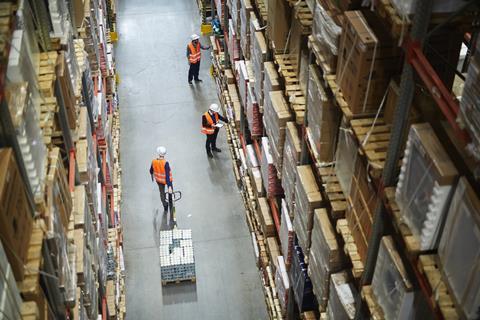Despite the recent well-documented economic challenges, occupational demand for warehouse space across the UK is booming. However, available sites remain in very short supply.

At the end of 2022, prime warehouse availability across the country was around 2%. Analysis St Modwen commissioned with Savills shows businesses are most likely to find the space they need when vacancy supply and demand levels are broadly in balance, at around 8%. But availability has not been at this level since 2013.
The long-term undersupply of warehouse space not only affects the efficiency and resilience of supply chains; it can also restrict the growth of some of the UK’s most productive industries. The government’s levelling-up ambitions are also being undermined, given warehouse development brings infrastructure improvements and employment opportunities and is a catalyst for housing delivery.
The root cause for today’s supply-demand imbalance is simple: planning policy needs revisiting. The urgent need for warehouse space has been underestimated in planning policy for a decade. It can take years for plans to be drawn up and implemented, in which time the market and economy have quickly evolved, leaving local authorities struggling to keep up.
For instance, local planning policy did not anticipate the rapid growth of ecommerce, which, according to the Office for National Statistics, rose from 12% of retail sales in 2015 to a peak of more than 37% in 2021.

As a result, in the past three years there have been calls to update planning policy to provide more support for warehouse development. While the government recently consulted on changes to the National Planning Policy Framework as part of its Levelling-up and Regeneration Bill, this was a missed opportunity for reform, as the updates largely focused on housing delivery, with less emphasis on national housebuilding targets.
In practice, these changes could even hinder warehouse development further. With less emphasis on national housing targets, there could be an unintended knock-on effect of reducing land allocated for employment use, thus restricting the development of warehouse spaces that provide fantastic employment opportunities to the local communities in which they are developed. In response to the government’s changes, some authorities have taken steps to withdraw and review their plans, creating more uncertainty for the industry.
Clear steps can be made to improve the system. When you consider that warehousing is as essential regional and national infrastructure, it makes sense for it to be planned for at a regional or national level. There should also be a presumption in favour of warehousing where certain site criteria are met and schemes are targeting the highest possible sustainability standards, which in turn can support councils’ net zero goals.
There should also be greater support for the intensification of industrial land, either through multi-level development or the blending of warehousing with other uses.
An acute shortage of warehouse space is a long-term issue for the UK, and could be a drag on the economy at a time when we need to stimulate growth. As a sector, we must continue to work together with the government and the public sector to highlight the issue and find new ways to deliver this critical national infrastructure.
Polly Troughton is managing director at St Modwen Logistics





























No comments yet